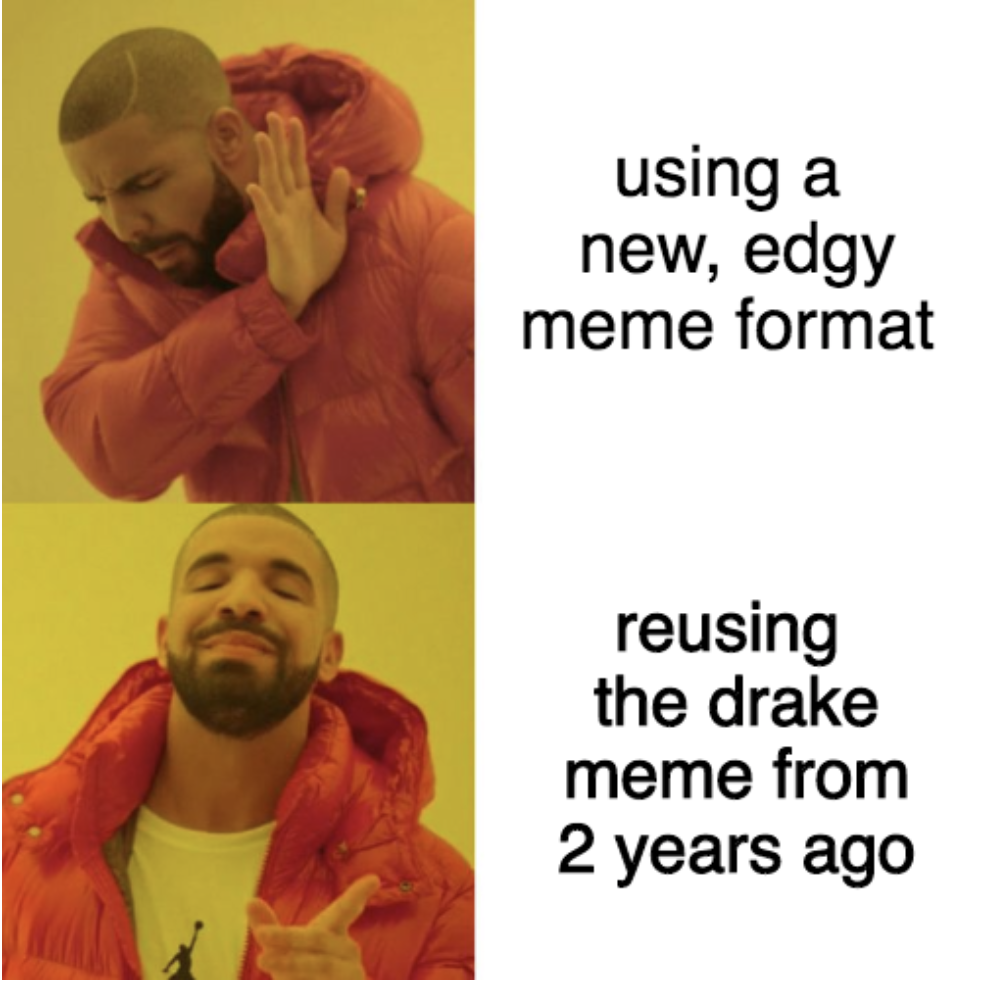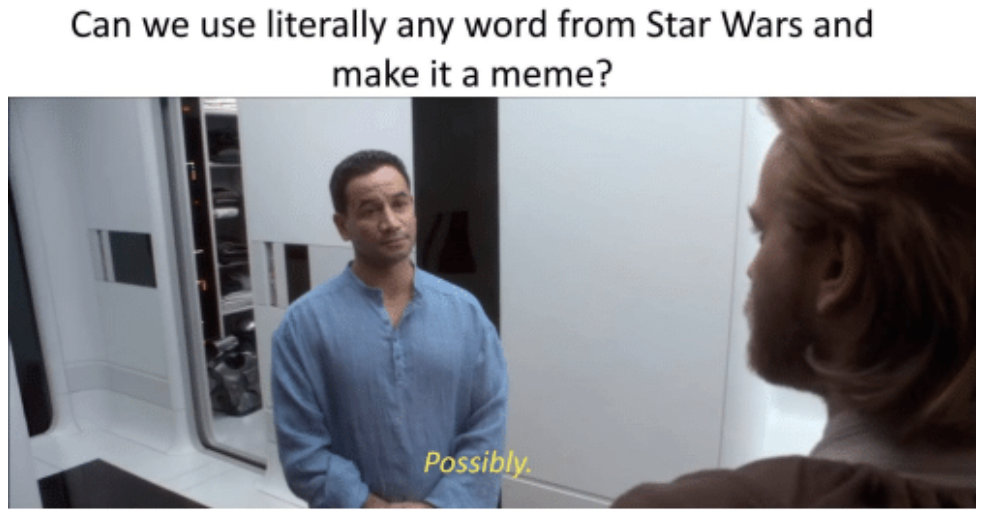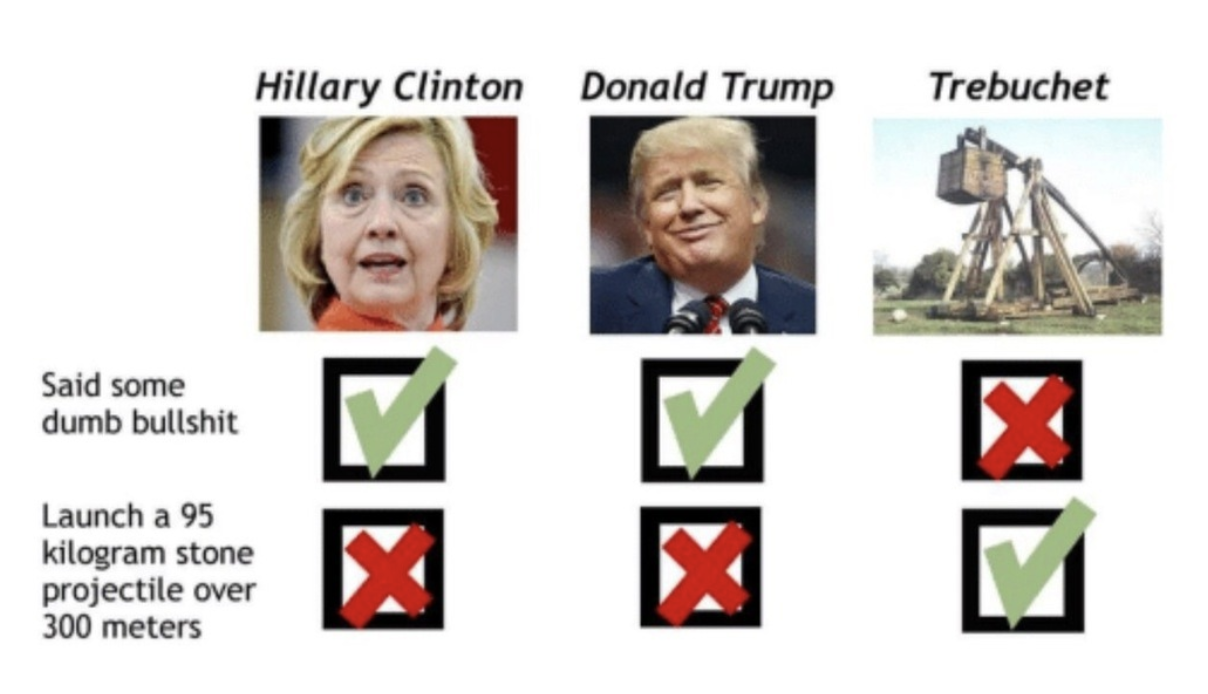By Charlie Harrison, MA Global Political Economy
Charlie Harrison gives us an insight into everyone's favourite internet phenomenon.
You know those private jokes you have with your friends? Where all you need to do is vaguely reference them to have everyone in heaps of laughter? These in-jokes can last for years, and evolve over time, bending back in on themselves and mutating so far from the original joke that they become utterly unrecognisable.
Now, thanks to the wonder of the internet, these in-jokes span millions of people and are immune to the constraints of geography, ethnicity, age, or, indeed, anything. These are memes. I imagine you've heard of them.
But what is the art of memes? What does it mean to be truly dank? Let’s find out.
Something key to a memes' survivability is its adaptability. Consider the Drake meme.

Image credit: Epigram / Alina Young
This meme has been around since 2015 – a long time in meme terms, but it still gets used regularly because of how easily the meme can be re-used to create new jokes. For some memes, this replicability is enough to keep them circulating. However, most memes rise and then fall from grace rapidly. Why?
Let us first consider the average life cycle of a meme. Many of the dankest memes originate on 4chan, Reddit, or other internet forums. These memes then spread to other sites. Alternatively, the meme may be a silly song or amusing public video, and humour is derived from referencing the source in some way. All Star by Smash Mouth is a perfect example. However, the consequence of a rise in popularity is that memes may be declared "normified", i.e. they have been adopted by "normal" people. This is the beginning of the end of a meme, and tends to happen as soon as the meme hits Facebook. But why is this? And what is it that is so offensive about normification?
To answer these questions, I will consider two types of memes: relatable, and meta.
Some of the most popular memes are the relatable ones. Here, the humour derives from the meme referring to something you can instantly recognise and relate to, with a picture that captures whatever that feeling is.

Image credit: me.me.
No doubt your Facebook timeline is currently full of these memes. However, to many, these are just low-effort normie memes (even though they can be surprisingly clever). Why are they dismissed like this? Well, let’s look at the other type of meme: the truly dank ones. I would define the main kind of humour among dank memes as meta.
Meta-humour is king among memes. In a generation so oversaturated with media and popular culture, there is something gratifying about media which directly comments on itself. For many memes, this is precisely where the humour is derived - it is not so much the joke itself, but the mere fact that a joke is being made out of this at all. They are not witty; rather, they make fun of the idea of being witty. Take, for instance, Star Wars prequel memes - often creating jokes out of the most
incredibly minor and random lines in the film series.

Image credit: me.me
The funny thing is not the joke itself, it is that a joke was made out of something so arbitrary. Also, that the memes rely on intimate knowledge of the Star Wars universe creates an effective barrier against normification, as well as parodying overly devoted fandoms who desperately pick apart their chosen franchise.
Similarly, consider the surprisingly popular Trebuchet memes. These memes are based around a devoted support for trebuchets as the superior siege weapon. Not only is the subject matter patently ridiculous, fitting in with our idea of parodying jokes, but it can even be read as a comment on our society and the way that people attach themselves to and then mindlessly support arbitrary groups and identities.

Image credit: Reddit
It should now be clearer why normification would ruin these memes; because their humour is derived from commenting on established forms of humour, and society in general. If these memes are normified, however, then they become the established form of humour, and thus lose their impact. And there we have it: to be truly dank is to be weird enough to stay out of normification, while remaining adaptable enough to never get old.
I’ve barely scratched the surface of all that memes can be, but if there’s one thing to take from this, it’s that it doesn’t matter a bit what kind of memes you like. Something that holds all memes together is the sense of community. Whether that is community in the sense of knowing the dankest, most underground memes, in sharing love of a franchise, or in sharing in our insecurities and faults as human beings, memes really do bring people together. Some may hate that one of our most popular forms of entertainment as a generation is something so immensely bizarre, but I wouldn’t have it any other way. With that in mind, let’s close this off with a nice wholesome meme:

Image credit: Reddit
Feature image: Unsplash / Owen Beard
Seen any particularly dank memes lately? Share them with us on social media.








